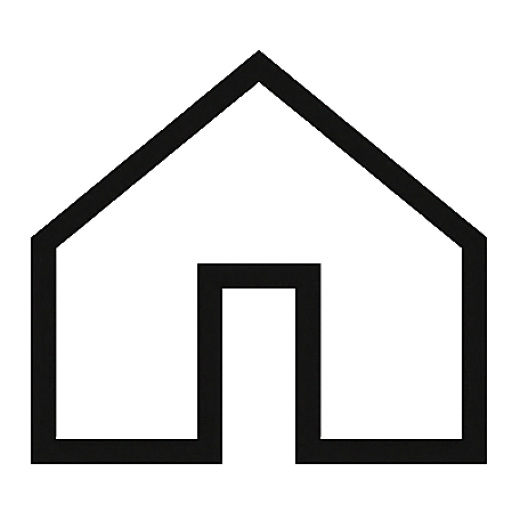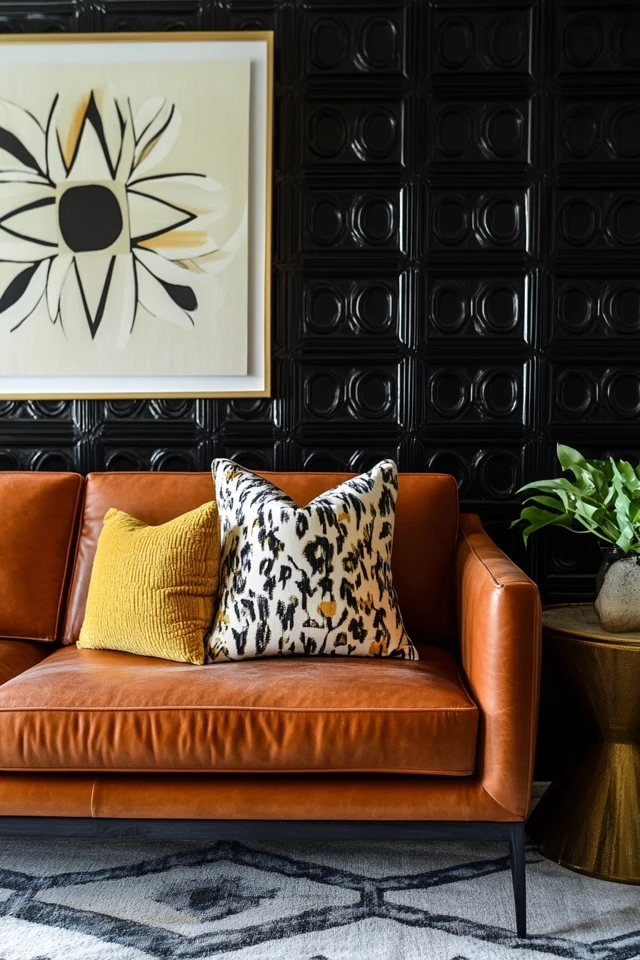Introduction
Mid-century modern design is known for its clean lines, organic forms, and timeless appeal. But when it comes to adding patterns, things can get tricky. I learned this lesson the hard way while decorating my first mid-century-inspired living room. Armed with a love for bold, geometric patterns, I went overboard — patterned curtains, a busy rug, and too many throw pillows all clamored for attention. The result? A chaotic, overwhelming space that felt more like a patchwork quilt than a cohesive design.
After some trial and error, I discovered the secret to integrating patterns into mid-century modern spaces: balance. By choosing the right scale, color palette, and placement, I was able to achieve a harmonious look that still felt lively and personal.
Patterns, when used thoughtfully, can breathe new life into mid-century modern design. They add depth, texture, and personality to the sleek simplicity of the style. Whether you’re drawn to bold geometrics, playful abstracts, or nature-inspired motifs, there’s a way to incorporate patterns without losing the timeless elegance that defines mid-century modern.
The Perfect Balance of Patterns and Simplicity
Patterns are a great way to personalize a mid-century modern space, but the key is restraint. A carefully curated approach allows the patterns to complement the design rather than compete with it.
Imagine a living room with a neutral sofa, a patterned rug featuring earthy tones, and a few graphic throw pillows in complementary hues. The result is a space that feels dynamic and layered without being visually overwhelming. In contrast, overloading the room with too many patterns can dilute the impact and make the space feel cluttered.
Patterns should act as accents, enhancing the room’s overall design. The beauty of mid-century modern lies in its simplicity, and patterns should serve to highlight — not overshadow — its iconic shapes and textures.
Why These Key Elements Work So Well Together
When used thoughtfully, patterns can enhance mid-century modern design by adding visual interest and depth. Here’s why these elements work so well together:
- Clean Lines Meet Playful Patterns
- Mid-century modern furniture is defined by clean, geometric lines. Patterns, especially those with repeating shapes or motifs, echo these forms and create visual harmony.
- Neutral Bases Allow Patterns to Shine
- The neutral color palettes often found in mid-century design provide the perfect backdrop for bold patterns. A beige sofa or teak credenza acts as a canvas, letting patterns take center stage without overwhelming the room.
- Timeless Motifs Enhance the Style
- Patterns inspired by mid-century modern aesthetics — such as starbursts, abstract shapes, and organic forms — feel cohesive and era-appropriate.
- Texture and Depth Add Warmth
- Patterns introduce texture, whether through textiles, wallpaper, or decorative accents. This adds depth to the streamlined simplicity of mid-century spaces, making them feel more inviting.
- Color Coordination Ties It All Together
- By choosing patterns that incorporate colors already present in the room, you can create a unified and harmonious look.
The combination of these elements ensures that patterns elevate your space without detracting from the core principles of mid-century modern design.
How to Incorporate Patterns: Step-by-Step
- Start Small
- Begin with a single patterned item, such as a throw pillow, area rug, or piece of artwork. This allows you to experiment without overwhelming the space.
- Choose Complementary Colors
- Stick to a color palette that complements your existing decor. For example, if your room features warm wood tones, opt for patterns with earthy hues like rust, olive, or mustard.
- Focus on One Statement Piece
- Let one patterned item take center stage. A bold geometric rug or a graphic wallpaper can act as the focal point, while other patterns remain subtle.
- Mix Scales Thoughtfully
- Combine large-scale patterns with smaller, more intricate ones to create balance. For example, pair a bold patterned rug with subtle, textured pillows.
- Layer Textures
- Mix patterned textiles with solid-colored pieces to create depth and dimension. A patterned throw blanket over a plain armchair can add visual interest without overwhelming the space.
- Use Patterns in Unexpected Places
- Add a playful touch by incorporating patterns in less obvious areas, such as inside cabinet backs, on lampshades, or through patterned planters.
- Keep Negative Space
- Leave room for the eye to rest. Avoid covering every surface with patterns, and let solid colors and clean lines provide balance.
Picture Gallery

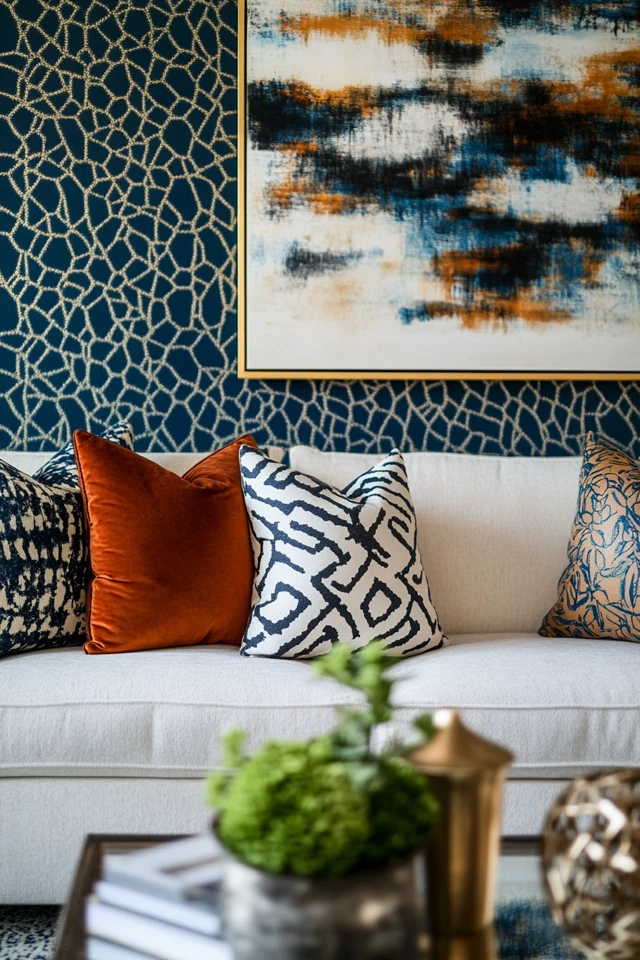
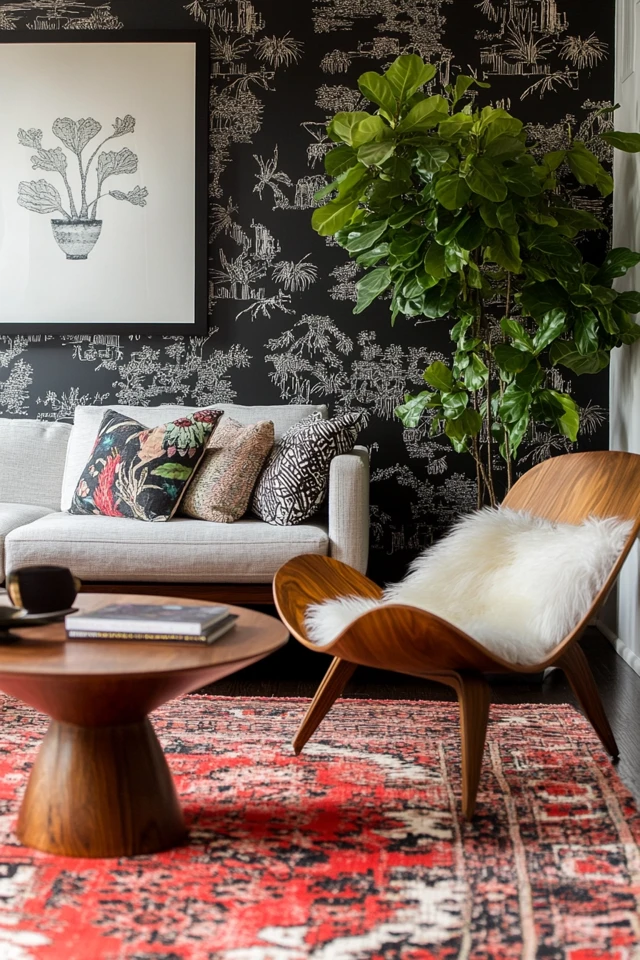
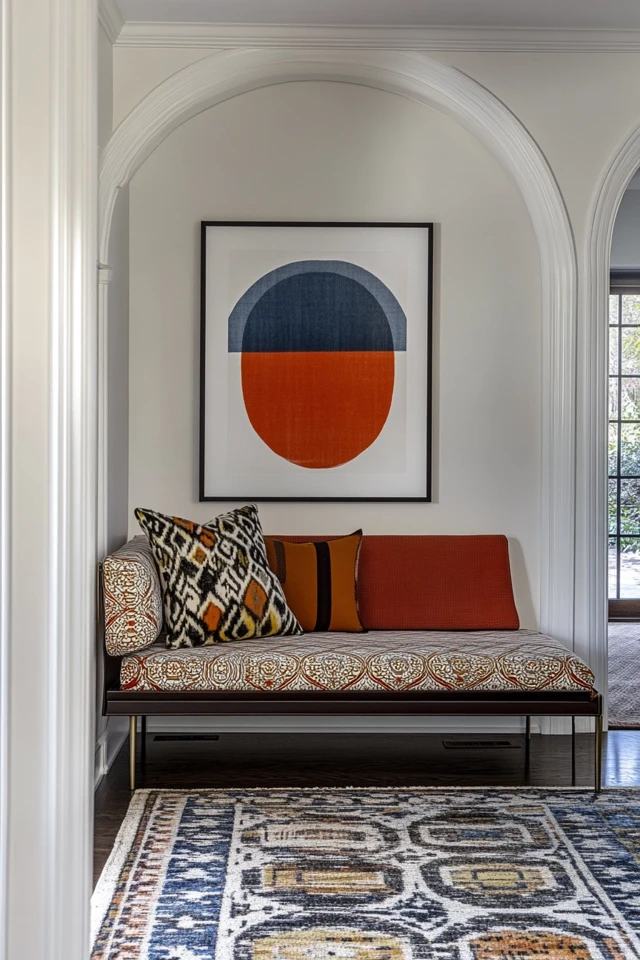
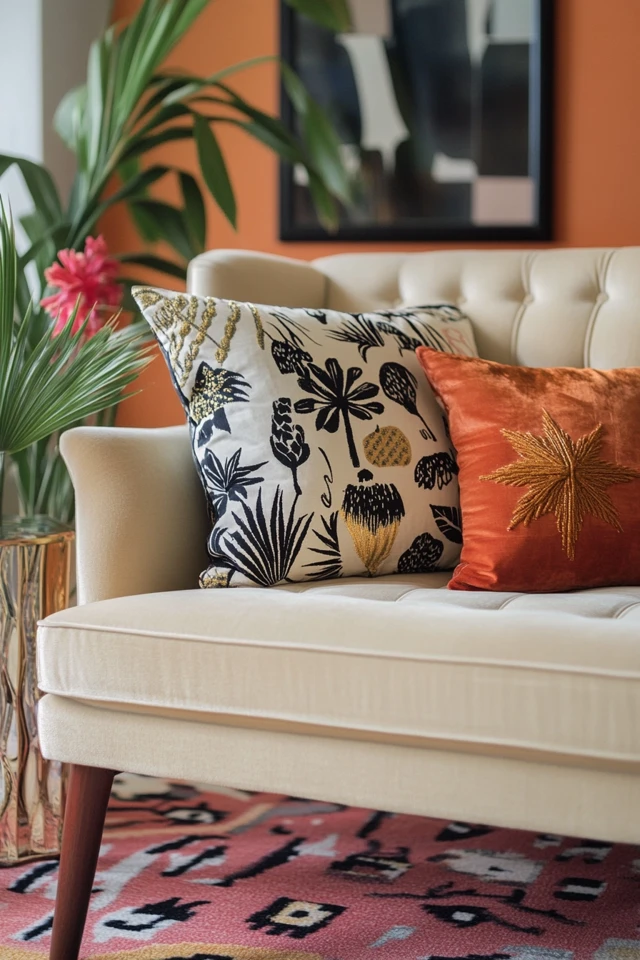
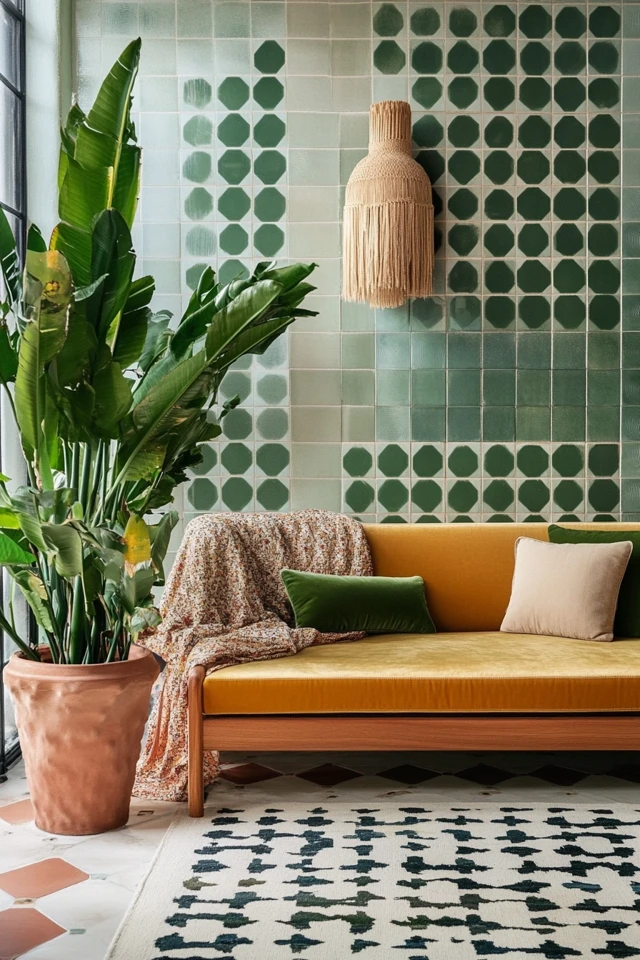
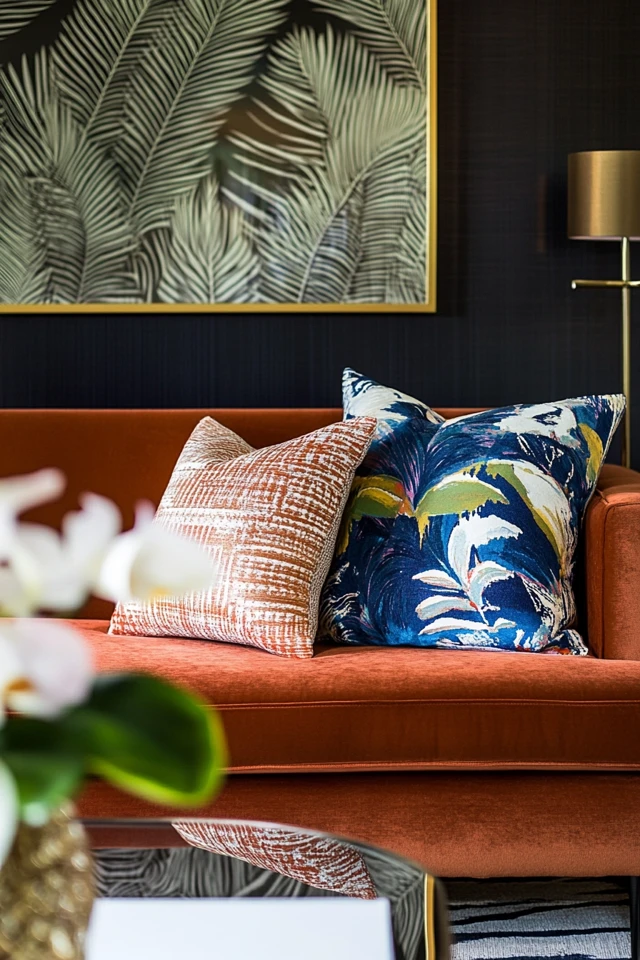
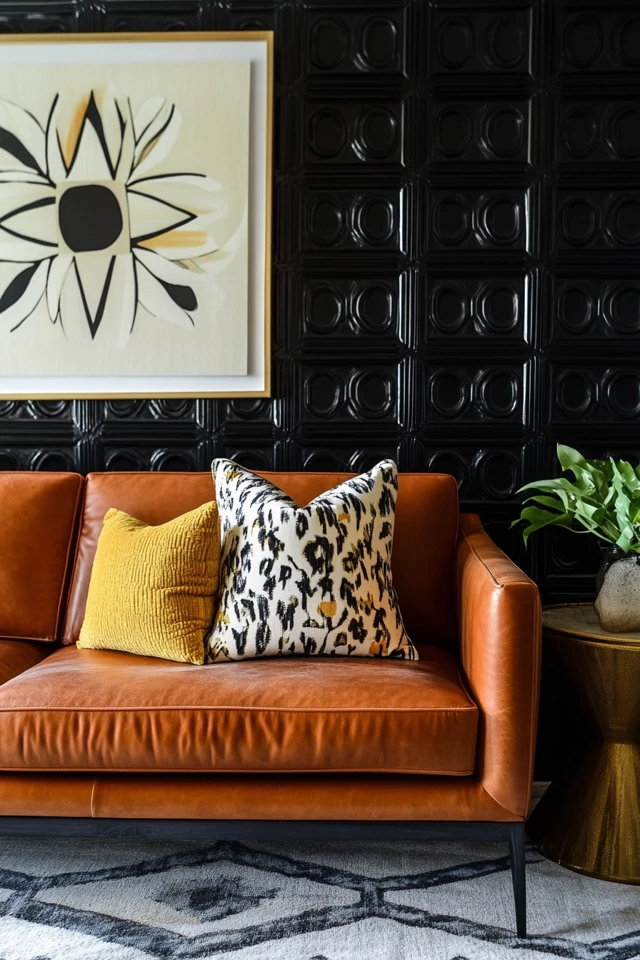
FAQ Section
- What types of patterns work best with mid-century modern design?
- Geometric patterns, organic shapes, and abstract motifs are ideal. Look for patterns inspired by mid-century art and design, such as starbursts, atomic shapes, and mid-century florals.
- How can I mix patterns without clashing?
- Stick to a cohesive color palette and vary the scale of the patterns. For instance, pair a large-scale geometric rug with smaller-scale patterned pillows in complementary hues.
- Can I use wallpaper in a mid-century modern space?
- Absolutely! Choose wallpapers with bold, graphic prints or subtle textures. Stick to accent walls to avoid overwhelming the space.
- What materials work well for patterned textiles?
- Natural materials like cotton, linen, and wool are ideal. These textures feel authentic to the mid-century aesthetic and add a cozy touch to your space.
- Is it possible to incorporate patterns in a minimalist mid-century space?
- Yes! Opt for subtle patterns in neutral tones or use patterned accents sparingly, such as a single pillow or a piece of art.
Variations
- Bold and Vibrant: Incorporate brightly colored patterns with large-scale motifs for a more playful and dynamic look.
- Muted and Subtle: Use soft, monochromatic patterns with intricate details for a calming and understated vibe.
- Nature-Inspired: Bring in patterns with botanical or organic motifs to add warmth and a connection to the outdoors.
- Layered Textures: Combine patterns with rich textures like velvet or boucle for added depth and a luxe feel.
How to Showcase It
- Living Rooms: Highlight a patterned area rug or throw pillows as focal points while keeping furniture simple.
- Dining Rooms: Use patterned chair upholstery or placemats for a subtle touch of flair.
- Bedrooms: Add patterned bedding or curtains to create a cozy, layered look.
- Entryways: A bold patterned wallpaper or runner can make a big impact in a small space.
Occasions to Feature It
- Seasonal Updates: Swap in patterned pillows or throws for seasonal refreshes — think florals for spring or cozy plaids for winter.
- Housewarming Parties: Showcase your unique style with thoughtfully chosen patterns that make your space feel inviting.
- Everyday Living: Patterns can bring joy and energy to daily routines, whether through a cheerful kitchen rug or a playful shower curtain.
- Photo Backdrops: A patterned accent wall or sofa makes for an Instagram-worthy setting for photos or virtual meetings.
Conclusion
Incorporating patterns into mid-century modern design is all about balance. When used thoughtfully, patterns can add personality, texture, and depth to your space while preserving the timeless elegance of the style.
Start small, experiment with scale and color, and let patterns enhance — not overwhelm — your space. By combining the clean lines of mid-century furniture with dynamic patterns, you’ll create a home that’s both stylish and inviting. So go ahead, mix and match, and let your creativity shine! And when you’ve achieved that perfect harmony, don’t forget to share your beautifully patterned space with the world.
